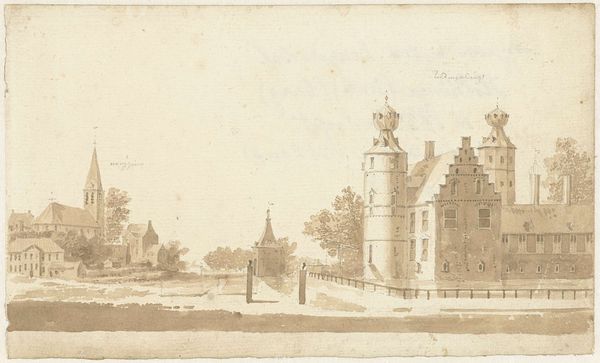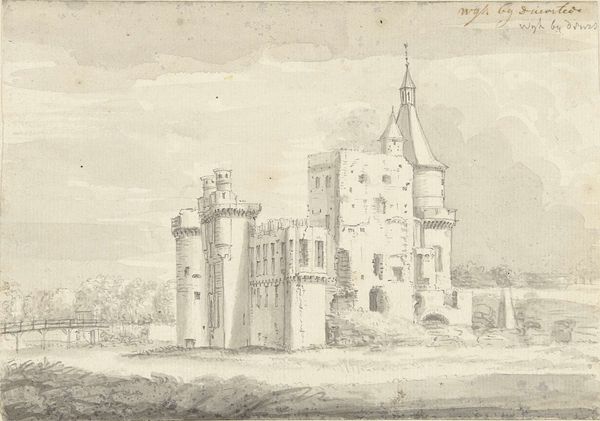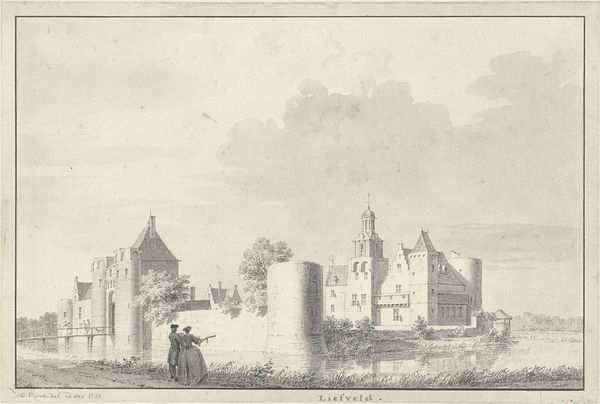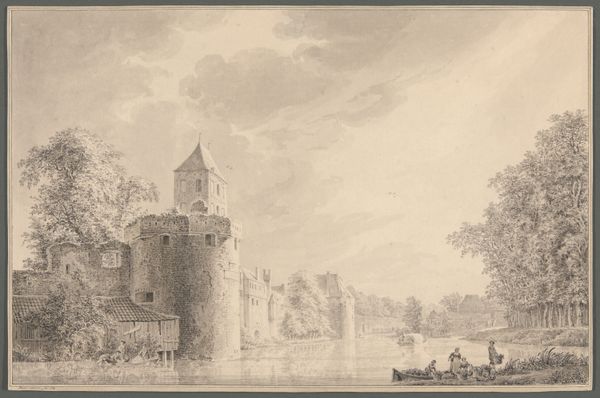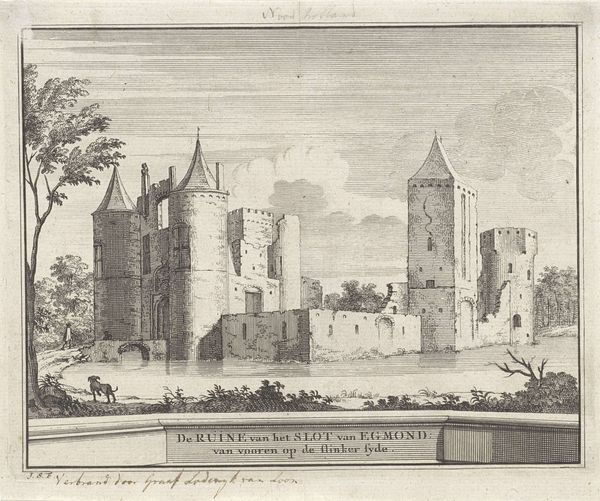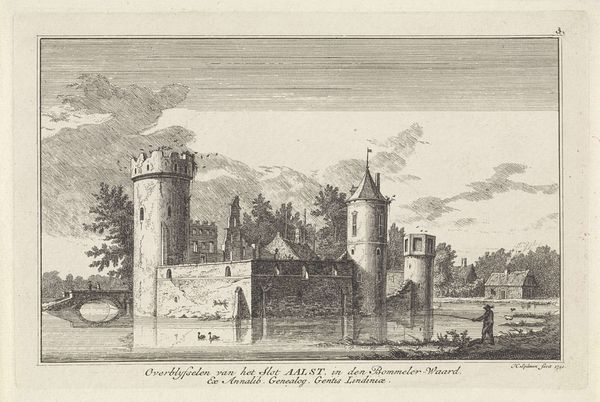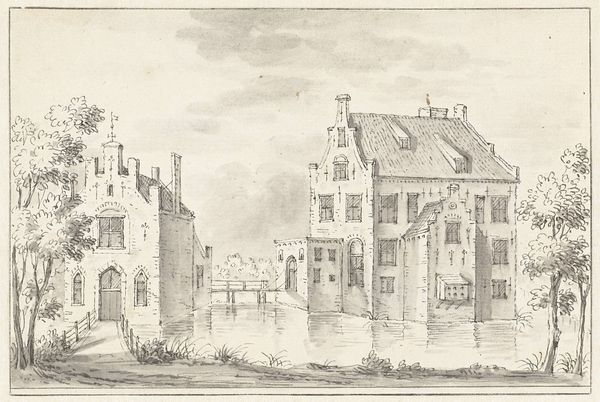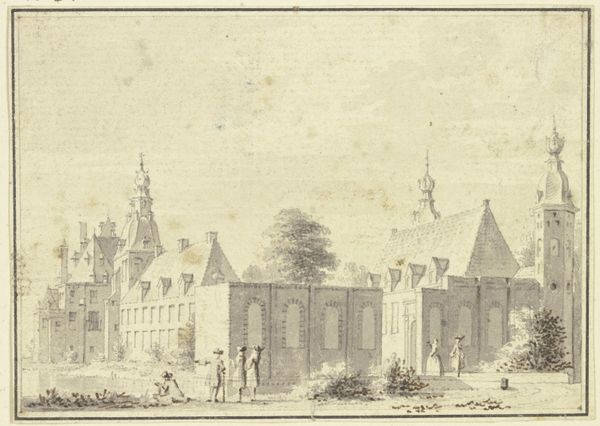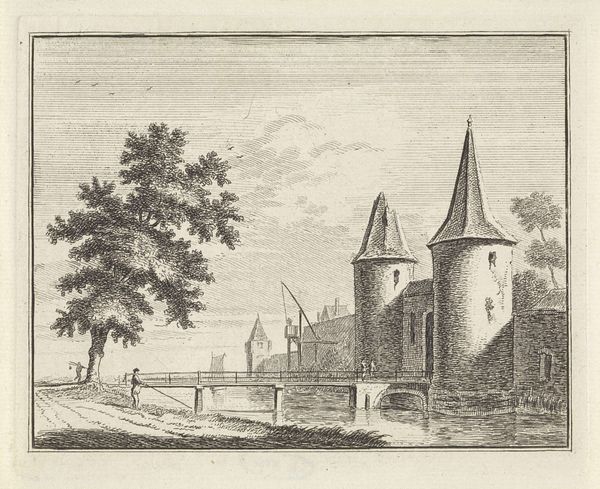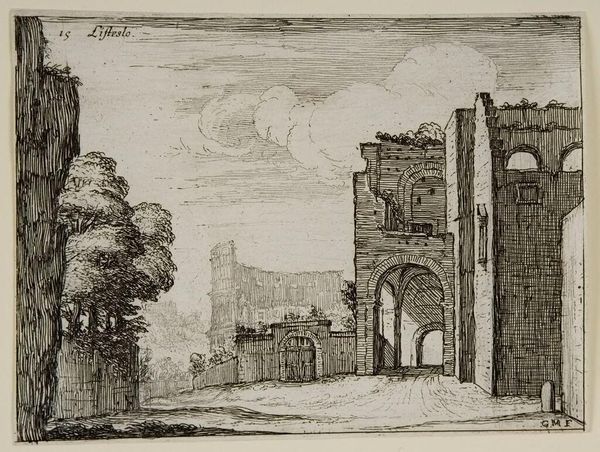
drawing, watercolor
#
drawing
#
dutch-golden-age
#
landscape
#
watercolor
#
coloured pencil
#
15_18th-century
#
genre-painting
#
watercolor
Dimensions: height 172 mm, width 227 mm
Copyright: Rijks Museum: Open Domain
Curator: Immediately striking, isn't it? A landscape of quiet desolation rendered with the lightest of touches. Editor: Absolutely, almost ethereal in its pallor, a study in washed-out colors, mainly done with drawing and watercolour; but tell me more, what is this? Curator: This drawing depicts "Het slot Aalst in de Bommelerwaard", a watercolor attributed to Pieter Remmers, placing it somewhere between 1754 and 1810. We see the castle, or what remains of it, surrounded by water. Notice how Remmers juxtaposes the grandeur of the architecture with the encroaching presence of nature. Editor: It speaks volumes about the decay of power. Observe how the delicate washes of colour soften the imposing structure, hinting at the relentless processes of erosion and weathering that shape both stone and social orders. I find it fascinating how such potentially mundane materials—paper, water, pigment—can be wielded to represent decline. Who commissioned this? Was it a comment on the crumbling feudal system? Curator: It is difficult to tell whether it was commissioned or created simply as an autonomous artwork. However, it is possible that someone wanted a keepsake of their former estate. In terms of its socio-political implications, absolutely! We can easily regard these castle ruins as allegorical representation of fading social hierarchies, an important topic in genre painting of the Dutch Golden Age and beyond. The artist certainly directs us to the contrast between human-built environment and nature in constant movement. Editor: It also invites questions about artistic labour itself. What kind of brushes did Remmers use? How readily available were these pigments? Where were they sourced? These details reveal so much about the economics of artmaking and distribution at the time. The colored pencil he must have used seems like an interesting choice for the topic. Curator: These are valuable points to raise! Thinking about the materiality shifts our attention to the hands of the artist, the merchants who provided him with those coloured pencils and paints, and of course the drawing itself. Editor: So, ultimately we’re left pondering the fragility of power and existence. It's amazing how a seemingly simple watercolor can lead to such rich contemplation of social structure. Curator: Precisely! And I think the subtle use of colour makes that point stronger: not with loud statements but soft, nearly whispered reminders.
Comments
No comments
Be the first to comment and join the conversation on the ultimate creative platform.
